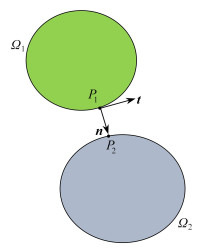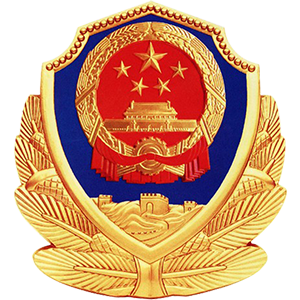Smoothed Finite Element Analysis of Contact and Large Deformation Problems
-
摘要: 橡胶材料因具有良好的抗震、吸能作用,在实际工程中应用广泛.然而橡胶超弹性材料的碰撞属于强非线性问题,分析橡胶材料的接触碰撞和大变形问题对于提高装置的缓冲性能具有重要意义.光滑有限元法(smoothed finite element method,S-FEM)是一种弱形式的数值计算方法,相比于传统的有限元方法,光滑有限元法对网格的质量要求不高,允许单元在计算过程中发生较大的变形,且光滑域的构造比较灵活,在不增加自由度的前提下,可以达到较高的精度.在光滑有限元法的基础上,采用双势方法进行接触计算,以充分利用光滑有限元法计算大变形问题的优点和双势方法求解接触力的优势.通过与有限元软件MSC.Marc的数值结果对比,验证了该算法的准确性和能量守恒性,并且分析了摩擦因数对碰撞体的影响.Abstract: Rubber material is widely used in practical engineering due to its good seismic and energy absorption effect. However, the collision of hyperelastic materials is a strong nonlinear problem. It is of great significance to analyze the contact collision and large deformation of hyperelastic materials to improve the buffering performance of the device. The smoothed finite element method (S-FEM) is a weak form of numerical calculation method. Compared with the traditional finite element method, the smoothed finite element method has low requirements on the mesh quality, allows the element to undergo large deformation during the calculation process, where the construction of the smooth domain is more flexible. The S-FEM has high accuracy without additional degrees of freedom. Based on the S-FEM, the double potential method was applied to contact calculation, with both advantages of the S-FEM in calculating large deformation problems and advantages of the double potential method in solving contact force fully used. In comparison with the numerical results of finite element software MSC. Marc, the results of the proposed algorithm were verified with high accuracy and good energy conservation, and the effects of the friction coefficient on the collision body were analyzed.
-
Key words:
- contact /
- large deformation /
- hyperelastic material /
- smoothed finite element method /
- bi-potential theory
edited-byedited-by1) (我刊编委冯志强来稿) -
表 1 不同摩擦因数不同时刻下的3种工况
Table 1. Three conditions at different moments with different friction coefficients
condition the moment the ball reaches the lowest point T/ms σmax/Pa ① μ=0.0 0.87 8.32E6 ② μ=0.2 0.70 4.37E6 ③ μ=0.4 0.61 4.22E6 表 2 计算效率对比结果
Table 2. Comparison results of calculation efficiency
time integration method contact algorithm total CPU TCPU/s MSC.Marc Newmark implicit penalty 9.48 FEM 1st-order implicit bi-potential 20.1 CSFEM-1SD 1st-order implicit bi-potential 9.887 CSFEM-2SD 1st-order implicit bi-potential 11.058 CSFEM-3SD 1st-order implicit bi-potential 12.415 CSFEM-4SD 1st-order implicit bi-potential 13.495 CSFEM-8SD 1st-order implicit bi-potential 17.627 CSFEM-16SD 1st-order implicit bi-potential 26.314 -
[1] YASKEVICH A. Real time math simulation of contact interaction during spacecraft docking and berthing[J]. Journal of Mechanics Engineering and Automation, 2014, 4: 1-15. [2] HUGHES P C. Spacecraft Attitude Dynamics[M]. Courier Corporation, 2012. [3] SUN Y, ZHAI W M, GUO Y. A robust non-Hertzian contact method for wheel-rail normal contact analysis[J]. Vehicle System Dynamics, 2018, 56(10/12): 1899-1921. [4] BROGLIATO B. Nonsmooth Mechanics: Models, Dynamics and Control[M]. Springer, 2016. [5] ZHANG J, WANG Q. Modeling and simulation of a frictional translational joint with a flexible slider and clearance[J]. Multibody System Dynamics, 2016, 38(4): 367-389. doi: 10.1007/s11044-015-9474-7 [6] 聂攀. SMA弹簧-摩擦支座在网壳结构隔震控制中的参数分析[D]. 北京: 北京建筑大学, 2016.NIE Pan. Parametric analysis of SMA spring-friction bearings in the seismic control of mesh-shell structures[D]. Beijing: Beijing University of Architecture, 2016. (in Chinese) [7] 杨静, 潘文, 苏何先, 等. 天然橡胶支座大变形压剪性能的双非线性超弹性理论和实验研究[J]. 工程力学, 2022, 39(8): 200-222. https://www.cnki.com.cn/Article/CJFDTOTAL-GCLX202208022.htmYANG Jing, PAN Wen, SU Hexian, et al. Double nonlinear hyperelastic theory and experimental research on the large deformation of natural rubber bearing in compression and shear[J]. Engineering Mechanics, 2022, 39(8): 200-222. (in Chinese) https://www.cnki.com.cn/Article/CJFDTOTAL-GCLX202208022.htm [8] 郑伟, 闫立志, 张泽云, 等. 动车组车钩缓冲装置橡胶缓冲器失效机理分析及优化[J]. 城市轨道交通研究, 2022, 25(6): 171-175. https://www.cnki.com.cn/Article/CJFDTOTAL-GDJT202206034.htmZHENG Wei, YAN Lizhi, ZHANG Zeyun, et al. Failure mechanism analysis and performance optimization of rubber draft gear of coupler buffer in EMU[J]. Urban Mass Transit, 2022, 25(6): 171-175. (in Chinese) https://www.cnki.com.cn/Article/CJFDTOTAL-GDJT202206034.htm [9] 罗操群, 孙加亮, 文浩, 等多刚体系统分离策略及释放动力学研究[J]. 力学学报, 2020, 52(2): 503-513. https://www.cnki.com.cn/Article/CJFDTOTAL-LXXB202002019.htmLUO Caoqun, SUN Jialiang, WEN Hao, et al. Research on separation strategy and deployment dynamics of a space multi-rigid-body system[J]. Chinese Journal of Theoretical and Applied Mechanics, 2020, 52(2): 503-513. (in Chinese) https://www.cnki.com.cn/Article/CJFDTOTAL-LXXB202002019.htm [10] BELYTSCHKO T, NEAL M O. Contact-impact by the pinball algorithm with penalty and Lagrangian methods[J]. International Journal for Numerical Methods in Engineering, 2010, 31(3): 547-572. [11] FRANCAVILLA A, ZIENKIEWICZ O C. A note on numerical computation of elastic contact problems[J]. International Journal for Numerical Methods in Engineering, 2010, 9(4): 913-924. [12] DE SAXCÉ G, FENG Z Q. New inequality and functional for contact with friction: the implicit standard material approach[J]. Mechanics of Structures and Machines, 1991, 19(3): 301-325. doi: 10.1080/08905459108905146 [13] FENG Z Q, JOLI P, CROS J M, et al. The bi-potential method applied to the modeling of dynamic problems with friction[J]. Computational Mechanics, 2005, 36(5): 375-383. doi: 10.1007/s00466-005-0663-8 [14] 周洋靖, 冯志强, 彭磊. 双势积分算法在非关联材料中的应用[J]. 应用数学和力学, 2018, 39(1): 11-28. doi: 10.21656/1000-0887.380139ZHOU Yangjing, FENG Zhiqiang, PENG Lei. Application of the bi-potential integration algorithm to non-associated materials[J]. Applied Mathematics and Mechanics, 2018, 39(1): 11-28. (in Chinese) doi: 10.21656/1000-0887.380139 [15] PENG L, FENG Z Q, JOLI P, et al. Bi-potential and co-rotational formulations applied for real time simulation involving friction and large deformation[J]. Computational Mechanics, 2019, 64(3): 611-623. doi: 10.1007/s00466-019-01672-9 [16] THOMASJ R H. The Finite Element Method: Linear Static and Dynamic Finite Element Analysis[M]. Prentice-Hall, 1987. [17] LI Y D, LI Y, FENG Z Q. A coupled particle model with particle shifting technology for simulating transient viscoelastic fluid flow with free surface[J]. Journal of Computational Physics, 2023, 488: 112213. doi: 10.1016/j.jcp.2023.112213 [18] LIU G R. On G space theory[J]. International Journal of Computational Methods, 2009, 6(2): 257-289. doi: 10.1142/S0219876209001863 [19] LIU G R. An overview on meshfree methods: for computational solid mechanics[J]. International Journal of Computational Methods, 2016, 13(5): 1630001. doi: 10.1142/S0219876216300014 [20] LIU G R, TRUNG N T. Smoothed Finite Element Methods[M]. Boca Raton: CRC Press, 2010. [21] LIU G R, DAI K Y, NGUYEN T T. A smoothed finite element method for mechanics problems[J]. Computational Mechanics, 2007, 39(6): 859-877. doi: 10.1007/s00466-006-0075-4 [22] LI Y, CHEN Q W, FENG Z Q. A cell-based smoothed finite element method for multi-body contact analysis within the bi-potential formulation[J]. Engineering Analysis With Boundary Elements, 2023, 148: 256-266. doi: 10.1016/j.enganabound.2022.12.023 [23] CHEN Q W, LI Y, FENG Z Q, et al. Contact analysis within the bi-potential framework using cell-based smoothed finite element method[J]. International Journal of Computational Methods, 2021, 19(6): 2141004. [24] YUE J, LIU G R, LI M, et al. A cell-based smoothed finite element method for multi-body contact analysis using linear complementarity formulation[J]. International Journal of Solids and Structures, 2018, 141: 110-126. [25] TAMMA K K, NAMBURU R R. A robust self-starting explicit computational methodology for structural dynamic applications: architecture and representations[J]. International Journal for Numerical Methods in Engineering, 2010, 29(7): 1441-1454. [26] MOREAU J J. Quadratic programming in mechanics: dynamics of one-sided constraints[M]. SIAM Journal on Control and Optimization, 1966, 4(1): 153-158. doi: 10.1137/0304014 [27] DE SAXCÉ G, FENG Z Q. The bipotential method: a constructive approach to design the complete contact law with friction and improved numerical algorithms[J]. Mathematical and Computer Modelling, 1998, 28(4/8): 225-245. [28] GAO Y, STRANG G. Dual extremum principles in finite deformation elastoplastic analysis[J]. Acta Applicandae Mathematicae, 1989, 17: 257-267. doi: 10.1007/BF00047073 [29] BLATZ P J, KO W L. Application of finite elastic theory to the deformation of rubbery materials[J]. Transactions of the Society of Rheology, 1962, 6(1): 223-252. doi: 10.1122/1.548937 -





 下载:
下载:




















 渝公网安备50010802005915号
渝公网安备50010802005915号